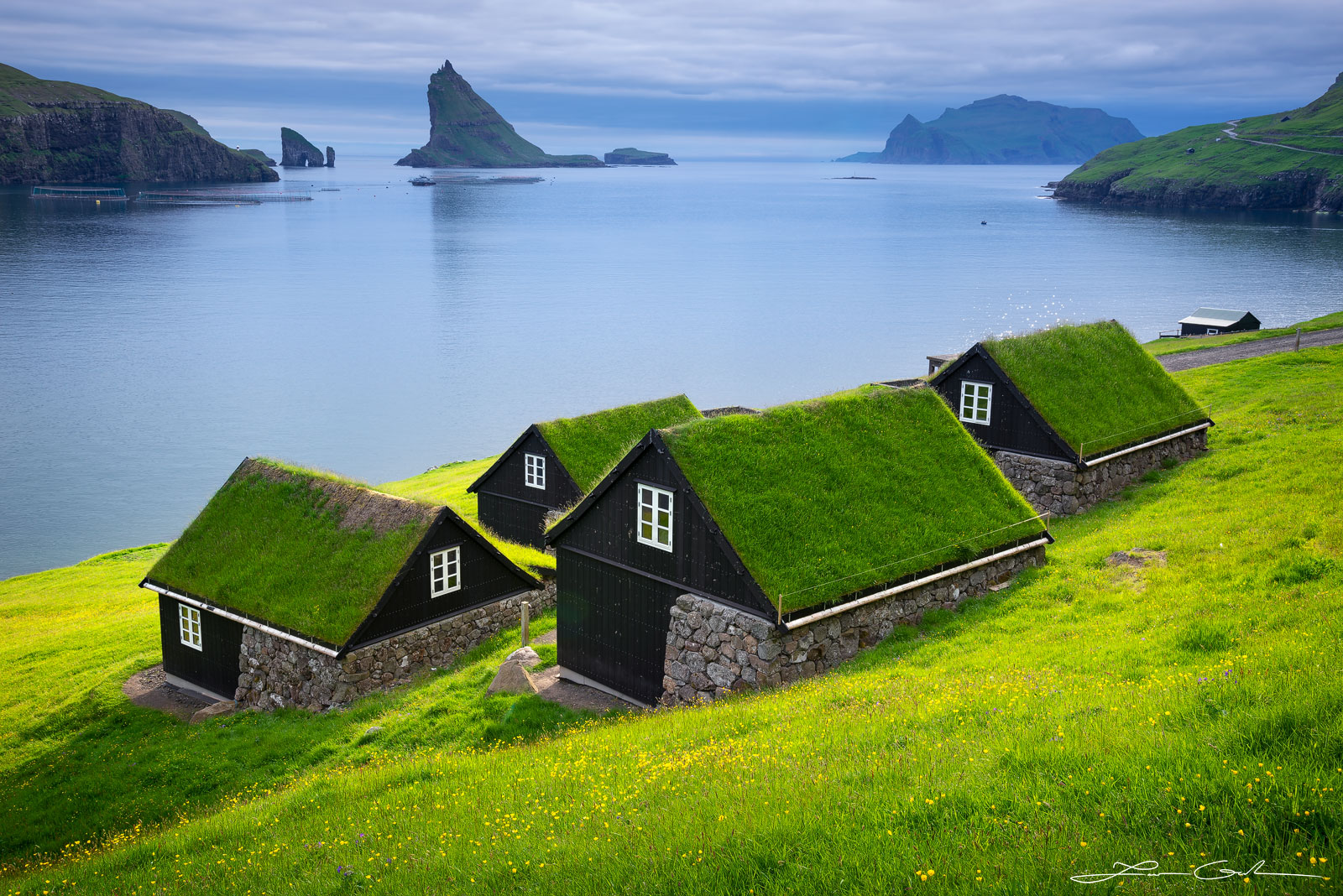Fantastic landscapes, rare wildlife, and Norse myths make everyday life in this Danish archipelago feel like a dream.

When the sun goes down, it pours its amber honey down a steep path that cuts through green grass meadows. I walk up the hill until I stop short and out of breath on a narrow hilltop. Sketched in the shade in the valley below is a view of the small village with a turf roof on Mykines, which is one of the Faroe Islands that is farther away.

On the other side of the sheer cliff, the wild, rough North Atlantic Ocean is all that’s visible. Along the edge of the ridge, hundreds of puffins strut and hop. As they huddle together in the salty wind, their feathers flap, and their bright orange beaks and teardrop-shaped eyes blink. Seeing so many of them at once against the vast ocean makes you feel like you’ve stumbled upon a meeting of mythical beings.
Watching Puffins from Mykines
There are no other guests or people around at all, which makes the scene even stranger. There are 18 islands in the North Atlantic Ocean, between Iceland and Norway. They have managed to stay out of the public eye (for now), and only 16 people live there permanently. During the winter, when the ice is thick, the island is mostly cut off from the rest of the archipelago and can only be reached by boat or chopper. While May through August are tourist months, people can go over for the day or spend the night, which is what my fiancé and I plan to do.

We took a ferry from the island of Vágar in the afternoon and stopped at The Locals Cafe in Mykines’ storybook town. Katrina Johannesen, the owner, sold us a hiking pass for 34 euros each. Johnsen says, “I was born here and left to study abroad in London, but I had to come back.” The peaceful view from the cafe’s windows makes it easy to understand why.

The puffins have slowed us down on our three-hour round-trip hike to the Holmur Lighthouse, which is a picture-postcard view of the westernmost point of the Faroe Islands. We’re staying on this thin strip of land to enjoy the birds. During nesting season, from June to August, they dig holes in these steep seaside rocks. They are most social at sunset, which is also the best time to see them.

Hikers should watch the birds from a safe distance, staying on the path and not touching the chicks or eggs because they stay close to the trail. The walk keeps getting more beautiful. Gulls and puffins fly high in the sky, and fog covers the rocky peaks of the coast. The salty wind whips around me in wild gusts, pulling my hair up into the air. As night falls, cotton candy sheep lead us down the winding road.
Exploring the Archipelago on foot
The next day, we take the boat back to Vágar, and I still feel like I’m in a dream. We get to the start of the Lake Sørvágsvatn trail by driving our rental car down winding roads with sharp turns. Our hike here costs an extra 27 euros per person, but I’m glad to pay because I know it helps fight over-tourism, which is becoming a bigger problem in the Faroe Islands. Along the edge of the 3.4-square-kilometer lake is a walk that is gently rolling. The green hills around are covered in tiny pink and purple flowers that look like snowflakes.
At the end of the walk, there is a short but steep climb up to the edge of a cliff. As we look back in the direction we came from, the lake seems to float hundreds of meters above the rough waves of the ocean, which defies the laws of physics. The crescent-shaped piece of water looks like it’s leaning toward us, but there’s only a small waterfall coming off of its edge.

The area is full of views that will blow your mind. Before a tunnel was built under Vágar in 2004, the postman had to walk across a mountain pass to get mail to Gásadalur, which is a hidden village. We follow in his steps to get a feel for how people lived on the islands before big infrastructure was built. The trailhead is to the left of the tunnel opening, going towards Gásadalur from the Vágar airport.
The two- to three-hour hike is rough, but at the end, you can see the few houses that dot the green headland from above. There is a 30-meter waterfall in the town that falls into the ocean. My fiancé and I gasped in shock when we saw it.